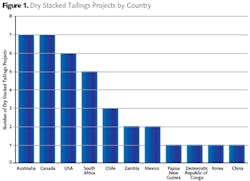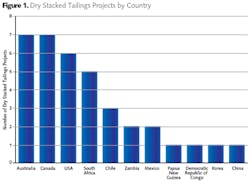Tailings Management: Outside Pressure, Water Stress Renew Focus as Mining Sector Rebounds
by Mike Kozar
Mining companies are compelled more than ever to address water management and environmental impacts. The largest mining countries in the Americas, Africa, and Asia-Pacific face high water stress and continued pressure from environmental interest groups, forcing innovation for operational sustainability. A recent upswing in commodity prices, sparked by expanding global economies, has kick-started project expansions and catalyzed new proposals. Because of this rebound, increased water use and management is also on the table again. To put things in perspective, the mining industry in the United States withdrew four billion gallons per day in 2015.
One key issue related to water for mining is tailings management. Tailings, a fine-grained, often toxic slurry left over after the processing of mined ore, are usually stored in impoundments called tailings ponds. However, many mines still dispose of tailings into freshwater bodies such as lakes and rivers. A handful of mines in Indonesia, Papua New Guinea, Turkey and Norway dispose of mine waste directly into the ocean.
Signaling the influence of outside pressure, environmental advocates recently drove Citigroup not to fund future mining projects — exceeding US$50 million — that dispose of tailings and waste in the oceans. An easy decision for the banking company, given mining company opposition (e.g., BHP Billiton) to the practice, it highlights an incremental shift.
Water stress, in addition to outside pressure, is also forcing firms to renew their focus on tailings management since dewatering tailings slurries offers a key reuse opportunity. In its 2017 sustainability report, Anglo American committed to increasing water reuse and recycling to greater than 85 percent by 2030, while BHP Billiton aims to reduce its 2022 water withdrawals by 15 percent from 2017 levels.
Mine tailings are regulated under the Clean Water Act because they often contain heavy metals and toxic chemicals. There are approximately 832 tailing ponds at active, non-coal mines (e.g., metal, non-metal, sand and stone) in the United States. The largest concentrations of tailing ponds in the U.S. are in Alabama, Florida, Texas and California, representing 36 percent of the total.
One emerging solution to water-related risks is dry stacked tailings. Dry stacking offers a clear solution to reducing tailings dam devastation but lacks the economics to become the default approach in the near term. To date, only six of the over 6,000 active mines in the United States utilize dry stacking. Bluefield has identified 36, globally. At three to eight times more expensive per ton of solid removed than other dewatering options such as filtration and tailings thickening, dry stacking will need to undergo significant cost reductions for it to become the go-to tailings management strategy.
In the U.S. we have recently seen a rollback of environmental controls impacting water for mining. However, we expect the mining industry to continue to focus on water and tailings management because of water scarcity, scaling public pressure, and competition with local communities for water. This focus will continue to increase on the heels of rising commodity prices and related mining sector expansion. IWW
About the Author: Mike Kozar is a senior analyst for Bluefield Research focused on industrial water markets. He can be reached at [email protected].
Circle No. 151 on Reader Service Card

